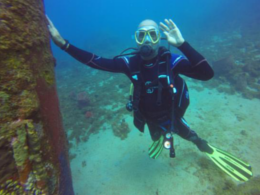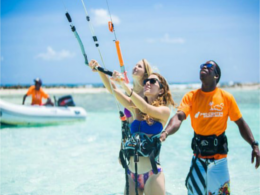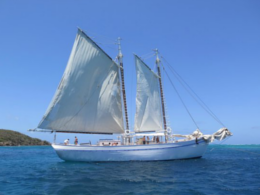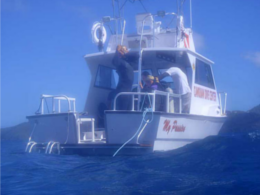Saint Vincent and the Grenadines is an island country in the Lesser Antilles island arc, in the southern portion of the Windward Islands, which lie at the southern end of the eastern border of the Caribbean Sea where the latter meets the Atlantic Ocean. The country is also known as St Vincent.
Its 389 km2 (150 sq mi) territory consists of the main island of Saint Vincent and the northern two-thirds of the Grenadines, which are a chain of smaller islands stretching south from Saint Vincent Island to Grenada. Most of Saint Vincent lies within the Hurricane Belt.
Population: 109,373(2013)
Area: 150.2 mi²
Capital: Kingstown
Currency: East Caribbean dollar
Climate
In Saint Vincent and the Grenadines, the climate is tropical, with a high temperature throughout the year, since the maximum goes from 84 °F in January and February, to 88 °F from May to October. Here are the average temperatures of the capital Kingstown.
Language
English is the official language. Most Vincentians speak Vincentian Creole.[14] English is used in education, government, religion, and other formal domains, while Creole (or 'dialect' as it is referred to locally) is used in informal situations such as in the home and among friends.
Health and Safety
Hurricanes are an annual risk. The La Soufriere volcano on the island of Saint Vincent is occasionally active, but a sophisticated advance warning system is in place and resulted in zero casualties in its latest eruption in 1979.
The US government suggests that hepatitis A and B shots be given to anyone travelling in the Caribbean, however there are no major health risks in the country.
Getting Around
Saint Vincent is relatively small, but the mountainous landscape makes it difficult to get around.
The island is served by a large number of privately owned vans that act as a bus service. These vans have an "H" at the beginning of their number plates, meaning they are "for hire." the island is served by a large number of privately owned vans that act as a bus service. These vans have an "H" at the beginning of their number plates, meaning they are "for hire."
If you are driving, be aware that the roads on the island are generally quite narrow. It is also advisable to be extra cautious as many roads on the island have sharp turns, steep inclines, and are generally quite bumpy, although most are paved. Many of these roads do not have sidewalks, so there can be pedestrians on the street sharing the road. Many bus stops are also on the side of roads where there are no sidewalks. Additionally, beware of impromptu passing as slow drivers are often passed by others.
Ferries, schooners, catamarans and small water taxis provide water transport between the islands. Day tours can be organised with a local hotel or guest house.
Popular Car Rental: Avis, Bens Auto Rentals, Car Rentals.
Accommodation
Activities




















